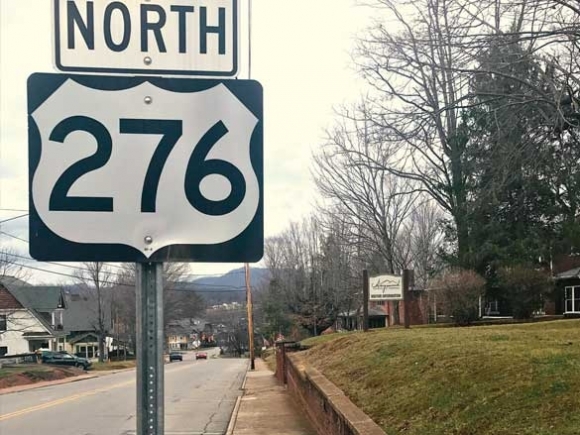Russ fuss averted? NCDOT prepares new plan

Public outcry over North Carolina Department of Transportation plans to eviscerate historic Walnut Street during Russ Avenue improvements slated for 2022 has, apparently, been heard loud and clear.
“If you look at the State Transportation Improvement Plan, it’s developed with the input of local governments,” said Brian Burch, DOT’s Division 14 Construction Engineer. “Projects are developed locally as needs arise, and we recognize at the end of the day that it’s their project.”
Most people in Waynesville agree that the $18 million Russ Avenue project is essential to the future of the community; traffic often snarls the important commercial thoroughfare, which is one of the few ways into and out of town.
But the project runs from the expressway south to Walnut Street, which town officials had specifically asked to be excluded from the work so as not to encroach on some of Waynesville’s oldest homes.
Residents — and town officials like Mayor Gavin Brown — were clearly dissatisfied when the DOT presented plans last fall that showed a substantial expansion to Walnut Street’s asphalt footprint.
Related Items
Brown took the unusual step of calling for a period of public comment at a Dec. 13 town board meeting, and called an additional special meeting Jan. 5 that drew a standing-room crowd that universally rejected the plans, which would have obliterated a century-old retaining wall and changed the nature of the Spread Out Historic District — an important aesthetic gateway to downtown Waynesville.
At the Jan. 5 meeting, Burch responded to citizens by saying, “We hear you.”
The DOT’s plans were then sent to the State Historic Preservation Office; those plans show that DOT’s proposed asphalt footprint — measuring 40 feet in width and including a 5 foot bike lane, two traffic lanes and a shared traffic/bike lane — has been reduced to 32 feet by removing the bike lanes.
The reduction in width means that the century-old retaining wall on the south side of Walnut will remain untouched, as will several large trees.
“The neighbors have not yet seen the plan but from what they are hearing from DOT about keeping the sidewalk and roadway within the existing footprint, the neighbors — and certainly I — would be very happy with that plan,” said Charles McDarris, who owns two historic properties on Walnut Street. “I think it’s a transition from a plan that everyone was very unhappy with to a plan that everyone will be very pleased with, and will add to the aesthetic value of the street and the community and will be an enhancement to downtown Waynesville.”
During a meeting with SHPO June 27, DOT was told to create a comprehensive utility plan before the project moves forward; utility poles currently in the sidewalk are not ADA-compliant, and could be placed in yards, or, alternatively, the street could be narrowed even further to accommodate them — both unpalatable options for owners of historic properties.
Instead, SHPO wants DOT to plan for putting the utilities underground — a most welcome solution that would align the look and feel of Walnut Street with Main Street, where overhead wires are a thing of the past.
“SHPO wants to know the impact on trees, and where traffic signals, poles, and cabinets well go,” Burch said. “They also want to know the impact on the retaining walls.”
With underground utilities, connections to structures would obviously still need to be made, meaning DOT would have to trench up people’s lawns or driveways, and possibly tunnel under the retaining walls to reach buildings set back from the street.
The next step, according to Burch, will be another public hearing; he wasn’t sure when that might be, but it should be soon. DOT Project Manager Wanda Austin said last week the timeline for the project appears to still be on track for a 2022 start.
“We’re just the conduit that delivers these projects,” Burch said. “We are government, but we live in these communities and we want to serve them well.”









